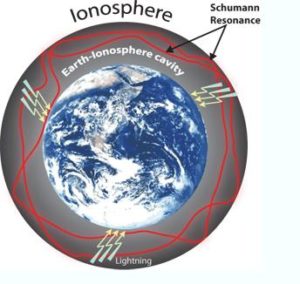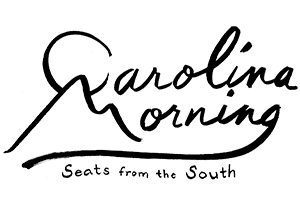One characteristic shared by practically all the ‘modern’ or ‘neolithic’ diseases like obesity, diabetes, hypo thyroidism, sleep apnea, etc.– is poor quality sleep. Whether this is causative or indicative has been a question. The reality is more complex. The cause and effect interact with each other. For instance, the poor sleep adds to the problem but is also a symptom of the problem. And our quest has been searching for ONE thing–like diet OR the right bed or hormone supplement.
 Just looking at the human organism won’t do it. The human organism is intricately connected to the earth and cosmos which includes things we have taken for granted and disregarded as unimportant and not related. The cycles of the seasons, timing of sunrise and sunset, temperature, diet, and the Earth’s Magnetic Field are completely left out in the search for a better sleep. Recent rock solid (pardon the pun) breakthroughs in science are now revealing beyond a shadow of a doubt, the missing key to optimum functioning lies in re-linking our own internal Circadian Clocks with the environmental triggers that keep it running ‘on time’.
Just looking at the human organism won’t do it. The human organism is intricately connected to the earth and cosmos which includes things we have taken for granted and disregarded as unimportant and not related. The cycles of the seasons, timing of sunrise and sunset, temperature, diet, and the Earth’s Magnetic Field are completely left out in the search for a better sleep. Recent rock solid (pardon the pun) breakthroughs in science are now revealing beyond a shadow of a doubt, the missing key to optimum functioning lies in re-linking our own internal Circadian Clocks with the environmental triggers that keep it running ‘on time’.
It should not be hard to relate to this. We know that computers of any sort have a ‘chip’ that is akin to the DNA of an organism. The chip sets the rules. Everything must fall into alignment or ‘synch up’ with the program on the chip. Even a car needs proper timing or it will ‘mis-fire’.
Our Circadian Clocks are currently interrupted by manmade obstacles–ironically what we call ‘conveniences’ and ‘improvements’ that have been introduced mostly in the past 100 years. While technology has ‘advanced’, sleep and health has gotten worse for the majority of modern humans. And we keep looking for a technological fix as if the human body could be ‘re-programmed’ to adapt to the modern world and industrial agriculture.
A new group or ‘camp’ of scientists is trying to match the environment to the DNA. What preserves cellular energy, coherence, homeostasis, genetic integrity, also creates the most generative sleep possible. Quality of sleep is both an indicator as well as a generator of health.
According to Dr. Ray Peat:
The ability to sleep deeply decreases in old age, as a generalized inflammatory, excitatory state of stress develops. With progressive weakening of restorative cellular relaxation (inhibition), cells become more susceptible to disintegration. (“sarcopenia”) of aging is also probably a process that occurs mostly during the night. Mediators of inflammation are at their highest during the night. (2)
The question has been, what are the significant aspects of the natural environment that make a difference. Or put another way: what IS the original blueprint for homo sapiens? Or “where is the fountain of youth?” In a nutshell, modern humans are out of synch with genetic code or the ryhthms that establish calm, homeostasis, cellular energy, brain power, metabolism, and strong immune function.
A circadian rhythm ( /s-r-ke-di-n/) is any biological process that displays an endogenous, entrainable oscillation of about 24 hours. These rhythms are driven by a circadian clock, and rhythms have been widely observed in plants, animals, fungi and cyanobacteria.
 It is now known that the molecular circadian clock can function within a single cell; i.e., it is cell-autonomous. At the same time, different cells may communicate with each other resulting in a synchronized output of electrical signaling. These may interface with endocrine glands of the brain to result in periodic release of hormones. The receptors for these hormones may be located far across the body and synchronize the peripheral clocks of various organs. Thus, the information of the time of the day as relayed by the eyes travels to the clock in the brain, and, through that, clocks in the rest of the body may be synchronized. This is how the timing of, for example, sleep/wake, body temperature, thirst, and appetite are coordinately controlled by the biological clock.
It is now known that the molecular circadian clock can function within a single cell; i.e., it is cell-autonomous. At the same time, different cells may communicate with each other resulting in a synchronized output of electrical signaling. These may interface with endocrine glands of the brain to result in periodic release of hormones. The receptors for these hormones may be located far across the body and synchronize the peripheral clocks of various organs. Thus, the information of the time of the day as relayed by the eyes travels to the clock in the brain, and, through that, clocks in the rest of the body may be synchronized. This is how the timing of, for example, sleep/wake, body temperature, thirst, and appetite are coordinately controlled by the biological clock.
Mark Sisson of the Primal Blueprint says,
Tens of thousands of anthropologists, evolutionary biologists, paleontologists, geneticists and others have worked for over 100 years to piece together a fairly detailed picture of all the elements that helped influence our development as a species. Ironically though, when we examine all of the many environmental influences and behaviors that shaped our genome, we arrive at a very simple list of general things our early ancestors did to become what and who they were and which allowed them to pass 99.9% of those genes down to us. In essence, this list is the original “Primal Blueprint” since it provided the only set of behaviors they knew – the exact behaviors that enabled then to shape their bodies into healthy, robust, happy beings…( 3)
Optimal sleep is achieved when the body’s circadian rhythms (preprogrammed DNA–or genetics) are synchronized with the environment (epigenetics). This is an example of where structure and function are intricately co-dependent. Metabolism has to be set right for the circadian rhythms of the organism to synchronize with the natural cycles of the sun (both the day cycles and the season/climate cycles). But metabolism itself is determined by these very natural phenomenon. So a metabolism out of whack will mess with sleep and regeneration, and yet sleep and regeneration are part of what sets metabolism.
There isn’t JUST ONE thing that resets the human circadian clock. Rather, there are FOUR primary factors–or dimensions–that need to be in place all at the same time. Let’s look at the significant factors that will match our environment to our DNA to supercharge our sleep and vitality.
1—EXPOSURE TO SHUMANN’S RESONANCE (Earth’s Electromagnetic Field)
2–LIGHT (TIMING of DAILY ACTIVITIES corresponding with sunrise and sunset) of sleeping, eating and exercising) and exposure to natural light.
3–TEMPERATURE (stay close to what is happening outside).
4–DIET (type of food, basically food which allows the optimal sensing of the master hormone leptin which regulates temperature, cellular energy, and metabolism),
Where do you START?
Stay Tuned for Part Two
